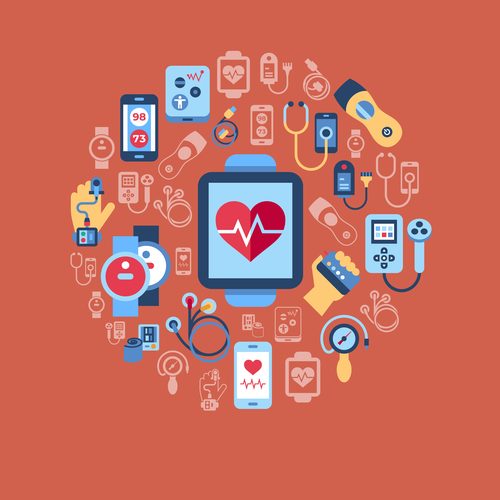Smart devices are everywhere nowadays, from refrigerators and coffee makers to security cameras and thermostats. A significant percentage of these Internet-of-Things (IoT) devices are designed for consumers. However, they have also become a mainstay in various other fields, including healthcare, where their use has become prolific.
The Internet-of-Medical-Things (IoMT) market has exploded in value, forecasted to reach approximately $158.1 billion by 2022, according to Deloitte.
As adoption of IoMT accelerates significantly, this means more accurate diagnosis, better patient care, and lower healthcare costs. Clearly, the future is here, and it’s only going to be smooth sailing from now on. Right?
Unfortunately, it’s not quite that easy. There’s one thing these 200 billion devices are going to need that, depending on where they are, could be in short supply. And that’s a network connection.
That leads us to two main concerns for these “healthcare miracles”:
- Do healthcare systems have the capacity and ability to handle 200 billion new devices on their networks?
- Are IT pros going to let 200 billion devices, with limited security, run around on their networks without any oversight?
Before we try to address these, though, let’s start by detailing what the IoMT is all about.
What is IoMT?
The Internet of Medical Things—also referred to as the Medical Internet of Things, or the Healthcare Internet of Things—is a variety of smart, networked equipment designed for healthcare, including wearables and medical monitors. These devices can be categorized by their application, such as:
On-body devices
On-body devices can be separated into consumer health devices and clinical-grade wearables. Devices aimed at consumers tend to be mainly for fitness or personal wellness, such as sports watches, smart clothing, and activity trackers.
Clinical-grade ultra-accurate, wearable devices that are regulated by health authorities and are mainly used under supervision or at the recommendation of a healthcare professional.
In-home IoMT devices
In-home IoMT systems are designed to ensure that patients can be monitored constantly and get medical care, even when mobility is an issue. This segment includes personal emergency response systems (PERS), remote patient monitoring (RPM), and telehealth systems.
Community IoMT systems
This segment of IoMT devices consists of:
- Mobility services in which passenger vehicles monitor a patient’s health in transit.
- Emergency response intelligence systems to help first responders, paramedics and ER personnel.
- Kiosks with touchscreen displays that can provide healthcare products or services, such as connecting patients with healthcare professionals.
- Point-of-care (PoC) devices used by healthcare professionals in non-traditional settings.
- Logistics systems to improve the transport and delivery of healthcare products and services, such as sensors to measure temperature, humidity, and other elements.
In-clinic IoMT systems
In-clinic IoMT systems are designed to perform clinical and administrative functions that allow healthcare professionals to deliver service remotely (aka TeleHealth). Essentially, qualified personnel can use medical devices while the professional is in a different location, but still receive all the necessary patient data.
In-hospital IoMT systems
In-hospital systems consist of IoMT devices and various management solutions, such as asset management, personnel management, patient flow management, inventory management, and environment and energy monitoring.

IoMT vs IoT: what’s the difference?
At their core, IoMT and larger IoT are the same. They both consist of smart devices connected to a network. IoT devices are designed to make life more convenient for consumers, which also means being very user-friendly.
Conversely, IoMT devices are designed to be highly accurate and reliable, with user-friendliness relatively low on the list of priorities. They are also meant to be highly secure. Consider a bad actor hacking into a hospital network and controlling all the smart devices connected to it. They would have power over hundreds if not thousands of lives. It’s a frightening thought.
Reliability and security are essential when it comes to IoMT devices. For example, streaming patient data is far riskier than sending data about the contents of your refrigerator. Inaccurate data or device failure in a healthcare setting carries far more severe consequences than at home. After all, if your TV or refrigerator fails to connect, you aren’t at risk of dying as a result.
How is IoMT changing healthcare?
IoMT allows for more accurate diagnoses and fewer errors. It lowers healthcare costs, and enables healthcare professionals to better monitor diseases, and prevent and manage chronic illnesses.
For example, a Cedars-Sinai Medical Center and UCLA study proved that even simple Fitbit activity trackers could be used to more effectively evaluate the state of patients with ischemic heart disease because they record multiple variables.
IoMT also improves the patient experience by reducing the need for in-person visits. It provides a better experience and reduces stress for the patient, but it also helps lower costs.
These devices are also helping researchers develop more effective treatments. Smart pills, for example, can contain microscopic sensors that provide scientists invaluable real-time data.
Most importantly, IoMT makes it collectively easier for healthcare providers to save lives. Regular monitoring means healthcare professionals will be able to direct preventative care to prevent life-threatening events, and critical care when needed.
What are the challenges of IoMT for healthcare’s IT networks?
The explosion of IoMT in the healthcare sector has created challenges that highlight the importance of a good foundation. A solid, efficient network, and the right tools are essential, considering that people’s lives often depend on seamless IoMT functionality.
Efficient Network Management
One challenge network administrators face is the exponential increase in assets, making network management a nightmare without the right tools.
Of course, before one can consider tools, the network itself must be robust enough to handle all these assets. In some cases, that means completely overhauling the network.
However, doing a patch job in healthcare and hoping the network doesn’t go down is unacceptable. A slow network that fails to see a change in a patient’s health data cannot be allowed to happen. Therefore, upgrading equipment and doing adequate capacity planning to ensure the network can handle the extra load is critical.
Furthermore, managing all these assets requires the right network management tools. IT professionals can only manage the network effectively if they can see it inside and out, which is where network discovery software can provide complete visibility and control.
As we mentioned, 200 billion IoMT systems coming online have significantly increased the amount of data in healthcare networks, and highlighted the need for speed and optimized data transfer.
Data needs to be processed quickly and latency eliminated as much as possible, so healthcare professionals can decide in real-time. Doing this at scale in a centralized environment is challenging, which is where edge computing comes in.
Based on a distributed network model, edge computing moves part of the storage and computational resources closer to the data source, and out of the data center. In other words, instead of sending raw data to a center to be processed and analyzed, much of the initial processing is done at a local cluster near where the data is generated.
Maximizing patient safety
Security breaches in healthcare are not a rare occurrence. According to Bitglass, hacking and IT incidents were the main causes of network breaches in 2020, a 55.1% increase over 2019.
Healthcare organizations appear especially vulnerable to security breaches because of their extensive use of legacy tech. For example, many expensive medical devices, such as MRIs and X-ray machines digitally transmit their data across networks, but cannot be patched or upgraded. As many as one-third of the devices in currently in use within hospital environments may have similar issues, according to KLAS Research.
Then there’s the matter of BYOD. As more healthcare professionals and hospital/clinic staff use their own devices to connect to the network, security risks rise exponentially. Not only do IT admins have to keep a close eye on who is connecting to their network, but they also have to worry about the security of those devices.
Maintaining connectivity
Ensuring constant connectivity in the healthcare sector is critical. However, according to a HIT Infrastructure study, 45% of connections initially fail.
These failures are the result of a variety of issues, including insufficient network capacity, or mobile devices being interrupted by physical barriers.
In healthcare, even a 1% failure rate is unacceptable, let alone 45%. It’s essential for IT teams to have the resources and tools they need to create an agile and secure network and implement automated rules to ensure vital equipment takes precedence.
How can network management tools help?
Effective network monitoring and management are critical factors in providing healthcare IT teams with all the network visibility they need. This means discovering all the devices on a network without having to try to map everything manually. It means faster troubleshooting because problems can be identified faster. It also means seeing where problems might arise in the future and taking steps to prevent them.
Furthermore, BYOD security issues can be reduced because the IT team will know the who, what, and where of all their network traffic. It also doesn’t hurt that these tools make IP address management easier, especially in a setting where hundreds of devices can connect and disconnect throughout the day and night. Say goodbye to IP conflicts!
Network management tools can also help save costs because they make it easier to plan for the future. After all, it’s much simpler to design an upgrade and refresh for your network when you know everything about your existing network, including inventory, dependencies, and resource utilization trends.
And network visualization can make it easy for IT teams to see what they need since it takes all this data and presents it in an easy-to-understand graphical format. This can also help IT professionals more easily obtain buy-in for future IT investments.
IoMT is the future of healthcare. Adoption is accelerating because of benefits such as more accurate diagnoses, improved patient outcomes and experience, and lower healthcare costs. However, IoMT is only as effective as the network that supports all these devices, and there are challenges that exist. The results of a network failure are much more profound in a medical setting. The stakes couldn’t be higher for IT pros.
From achieving full network visibility and automating various tasks to customizable alerts and faster troubleshooting, good healthcare network management software can do it all. And that makes it invaluable in a setting where people’s lives hinge on a network operating at peak efficiency.
Ready to see how Auvik can help you manage your complex network? Get your free 14-day Auvik trial here, and see the difference from best in class network monitoring and management.





